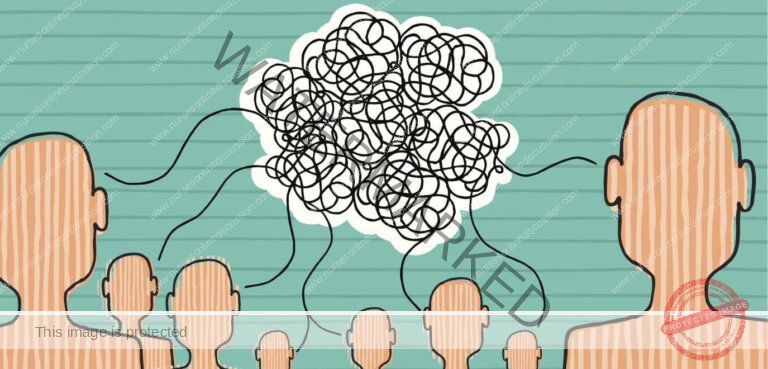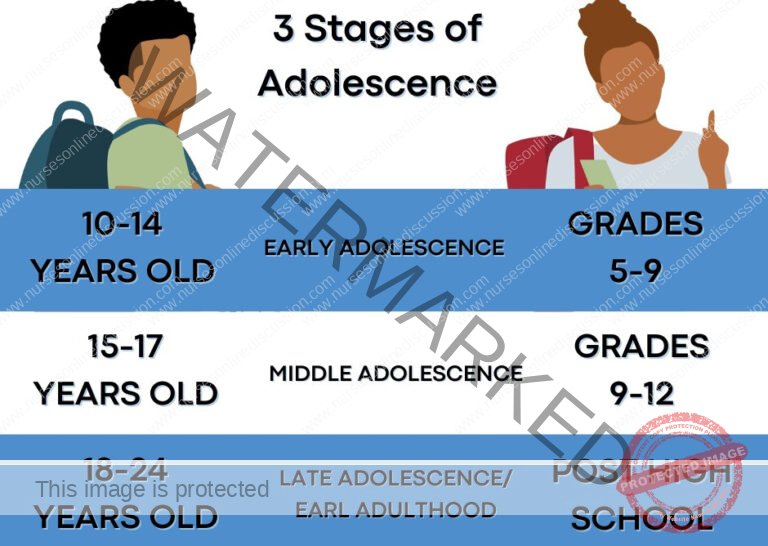Adolescent Reproductive Health
Subtopic:
Growth and Development in Adolescents
Growth during adolescence encompasses the physical transformations experienced during this developmental stage. These physical alterations are primarily driven by hormonal shifts and genetic predispositions.
Development in adolescence pertains to the psychological, emotional, and social evolution that unfolds throughout this phase of life. This evolution is shaped by an interplay of biological, psychological, and social elements.
Nutritional status and nutrient requirements are significantly impacted by the biological, psychological, and cognitive changes initiated in puberty and continuing through adolescence. During puberty, adolescents experience physical growth and overall development, leading to increased needs for energy, protein, vitamins, and minerals.
Simultaneously, adolescents undergo significant shifts in their capacity to process information, pursue autonomy, and cultivate their individual identities. The elevated demand for energy and nutrients, combined with growing financial independence, freedom in dietary selections, and still-developing cognitive skills, can place adolescents in challenging and impactful situations with enduring consequences.
Body Changes During Adolescence
| Boys | Girls |
| Broad shoulders | Wider hips |
| Wider chests | Development of breasts |
| Muscle growth | Acne and pimples |
| Facial hair growth | Development of sex organs |
| Acne and pimples | Higher voice |
| Development of sex organs | Development of pubic hair |
| Development of pubic hair |
Changes during Adolescence
Physical Transformations
This period is characterized by significant physical maturation, marked by the development of reproductive capabilities. Adolescence bridges the gap between childhood and physical adulthood through the emergence of primary and secondary sexual characteristics.
Primary Sexual Characteristics: These are directly related to reproduction:
Females: The initiation of menstruation (menarche) signifies the start of their reproductive cycle.
Males: Growth of the penis and testes occurs, accompanied by the commencement of sperm production, indicating the capacity for reproduction.
Secondary Sexual Characteristics: These are outward signs of sexual maturity, not directly involved in reproduction:
Females: Development of breasts, appearance of pubic hair, increased fat deposition in the hip area, a subtle softening of the voice, shifts in self-perception of their body, gains in weight and height.
Males: Deepening of the voice, growth of facial and body hair, enlargement of the penis, occurrence of erections, alterations in body image, increases in weight and height.
Physiological Shifts
Internally, adolescents undergo various physiological changes:
Females: Menstruation (menarche) begins, skin may be prone to acne, skin tends to appear smoother, and the voice may become more melodious.
Males: Nocturnal emissions (“wet dreams”) may occur due to sperm production, a drive for less reliance on family emerges, the voice deepens, and the Adam’s apple becomes more prominent.
Psychological and Emotional Evolution
Adolescence is a time of intense emotional and mental development:
Heightened awareness of personal sexual urges and desires develops.
Attraction and interest in individuals of the opposite sex (or same sex) becomes more pronounced.
Tendencies towards resistance to authority, disobedience, displays of hostility, and fluctuating moods may surface as part of their journey toward independence and identity formation.
Sexual Development
This stage involves the unfolding of sexual identity and behaviors:
Sexual arousal and feelings awaken, marking the beginning of sexual experience.
Masturbation may become a part of sexual exploration.
Attraction to others, whether of the opposite or same sex, emerges and can influence behaviour as adolescents navigate their sexual orientation and identity.
Behavioural Adaptations
Social behaviour undergoes significant transformation:
Formation of strong peer groups becomes a central aspect of social life, offering belonging and support outside the family.
A drive for independence from family intensifies as adolescents seek autonomy and self-reliance.
Habit formation is prominent, heavily influenced by peer associations, which can lead to both positive and negative behaviours, including experimenting with substances like smoking and alcohol.
Reactions to Change: Divergent Perspectives
Adolescents and adults may react differently to the changes and behaviours of this period:
| Adolescents | Adults |
| Experience anxiety | May exhibit overprotection |
| May display shyness | May experience anxiety |
| Potential for depression | May show judgmental attitudes |

Misconceptions/Myths Associated with Growth and Development
Females:
Large buttocks are an indicator of high sexual activity. (This is a false correlation.)
Smaller breasts are inherently more desirable. (Beauty standards vary and this is subjective.)
Sexual intercourse can relieve menstrual cramps. (While it might offer temporary relief for some, it’s not a reliable solution and is a misconception.)
Menstrual cramps are a sign of infertility. (Cramps are a common symptom of menstruation and not indicative of infertility.)
The vagina is a hollow space where objects can get lost. (The vagina is not an endless cavity.)
Pregnancy is only possible after a girl has menstruated for a year. (Fertility begins with ovulation, which can occur before or shortly after the first period.)
“Safe days” are a reliable method of contraception. (The rhythm method is unreliable due to cycle variability.)
Thin hips are considered more attractive. (Body ideals are culturally and personally influenced.)
Menstrual flow is inherently unhygienic and smells bad. (Menstrual blood is not inherently dirty, and odor is usually due to hygiene practices or products used.)
Uncircumcised girls are constantly restless and sexually aroused. (Circumcision status has no bearing on constant arousal levels.)
Starting menstruation implies prior sexual intercourse. (Menarche is a biological event, not related to sexual activity.)
Hip enlargement is solely caused by sexual activity. (Hip growth is a natural part of adolescent development and fat distribution.)
Menstrual flow breaks the hymen and causes loss of virginity. (The hymen can be broken in various ways, and menstruation is unrelated to virginity.)
Small breasts mean insufficient milk production for breastfeeding. (Breast size is not an indicator of milk production capacity.)
Girls are never seen as children and are always considered mature. (This denies the developmental stages of girlhood and adolescence.)
Breasts enlarge simply by being touched by men. (Breast growth is hormonal and not stimulated by touch.)
A woman who doesn’t give birth is like a barren mule. (This is a derogatory and inaccurate comparison devaluing women without children.)
Every woman becomes fertile during the rainy season. (Fertility is not seasonally dependent.)
One should have children at a very young age. (Optimal childbearing age is a complex issue and not solely determined by youth.)
Sexual intercourse cures skin problems like spots and pimples. (This is a false and unscientific claim.)
Males:
A larger penis size is always better. (Penis size is not directly correlated with sexual satisfaction for partners.)
An erection means sexual activity is necessary. (Erections are normal physiological responses and do not mandate sexual activity.)
Boys without beards are not yet considered men. (Beard growth varies and is not the sole marker of manhood.)
Only boys with hairy chests are attractive. (Attractiveness is subjective and not determined by chest hair.)
Girls are exclusively attracted to tall, masculine boys. (Attraction is diverse and not limited to specific physical traits.)
Boys can only impregnate girls at age 18. (Male fertility begins at puberty, not age 18.)
Big toes indicate a large penis size. (This is a false and unfounded correlation.)
Problems Faced by Adolescents as a Result of Body Changes
Societal Pressures: Adolescents grapple with external pressures to act like adults, often feeling compelled to adopt mature behaviors, including conforming to certain dress codes and aspiring to a particular lifestyle.
Struggle for Independence: Gaining autonomy from family can be difficult. Parental rules, such as limitations on socialising with the opposite gender, managing finances, and curfews, may be viewed by adolescents as overly restrictive.
Peer Group Importance: Connections with friends become incredibly significant. Adolescents might prioritize their peer group, even when facing disapproval or lack of understanding within their own families.
Girls’ Physical Concerns: Girls may experience challenges related to menstruation, skin issues like acne, increased perspiration, concerns about vaginal discharge, and adjustments to changing body size and shape.
Boys’ Physical Concerns: Boys may face challenges including nocturnal emissions (“wet dreams”), frequent erections which can be socially awkward, and adapting to significant shifts in body size and form.
Solutions to the Problems
Open Communication is Key: Parents and guardians should actively foster open and honest conversations with adolescents to truly understand their worries and viewpoints.
Comprehensive Education Initiatives: Schools should implement thorough educational programs that cover not only the physical transformations of adolescence but also the linked emotional and psychological experiences.
Build Supportive Peer Groups: It’s important to cultivate a supportive and understanding environment among peer groups and within schools, enabling adolescents to navigate difficulties together.
Accessible Counseling Services: Provide readily available counseling resources for adolescents, offering a safe space to discuss their concerns related to body changes as well as wider life challenges.
Parental Guidance Workshops: Organize workshops specifically for parents, providing them with effective methods and knowledge to guide their teenagers through this transitional period.
Promote Positive Body Image: Launch awareness campaigns that actively promote a healthy body image, helping adolescents to accept and appreciate their evolving bodies.
Balanced Parental Boundaries: Advocate for flexible yet responsible parental boundaries, granting adolescents appropriate independence while maintaining essential guidelines for their safety and well-being.
Integrate Life Skills Education: Incorporate life skills training into school curriculums, focusing on essential abilities like decision-making, effective communication, and conflict resolution.
Community Support Systems: Encourage community involvement in supporting adolescents, fostering greater understanding and building a supportive environment for their healthy growth.
Accessible Health Resources: Ensure adolescents have easy access to vital health resources, including reliable information on menstrual health, reproductive well-being, and readily available mental health support.

Developmental Stages of Adolescents
| Early Adolescence (Approx. 10-14 yrs) | Middle Adolescence (Approx. 15-16 yrs) | Late Adolescence (Approx. 17-19 yrs) | |
| Independence | Struggle with identity. | Alternating high/low self-expectations. | Firmer identity. |
| Moodiness. | Parental interference complaints. | Ability to delay gratification. | |
| Improved speech. | Strong appearance concern. | Think/express ideas well. | |
| Feelings through action. | Lowered parent opinion, withdrawal. | Sense of humor. | |
| Close friendship importance. | Effort to make new friends. | Stable interests. | |
| Less attention to parents. | Emphasis on peer group. | Emotional stability. | |
| Realizing parent flaws. | Sadness from losing parents’ image. | Make independent decisions. | |
| Search for relationships. | Examination of inner self. | Ability to compromise. | |
| Childish behavior return. | Pride in one’s work. | ||
| Peer influences. | Self-reliance. | ||
| Concern for others. | |||
| Cognitive | Increasing career interests. | Intellectual interests important. | Defined work habits. |
| Mostly interested in the present. | Directing energy into career. | Higher concern for the future. | |
| Greater ability to work. | Thoughts on one’s role in life. | ||
| Sexuality | Girls develop early. | Concerns about attractiveness. | Serious relationship concern. |
| Shyness, blushing. | Changing relationships. | Clear sexual identity. | |
| Experimenting with body. | Explore opposite sex with fear. | Tender, sensual love. | |
| Worries about normality. | Tenderness, fear. | ||
| Love, passion. | |||
| Ethics | Rule and limit testing. | Ideals and role model development. | Insightful. |
| Experimentation with substances. | Consistent conscience. | Personal dignity and self-esteem. | |
| Abstract thought capacity. | Greater capacity for setting goals. | Ability to set goals and follow through. | |
| Moral reasoning interest. | Acceptance of traditions. | ||
| Self-regulation of self-esteem. | |||
| Physical | Height and weight gains. | Continued growth. | Girls fully developed. |
| Pubic/underarm hair growth. | Pubic/underarm hair growth. | Boys continue to gain in height, weight | |
| Increased body sweat. | Increased body sweat. | ||
| Skin and hair changes. | Skin and hair changes. |
Get in Touch
(+256) 790 036 252
(+256) 748 324 644
Info@nursesonlinediscussion.com
Kampala ,Uganda
© 2025 Nurses online discussion. All Rights Reserved Design & Developed by Opensigma.co

